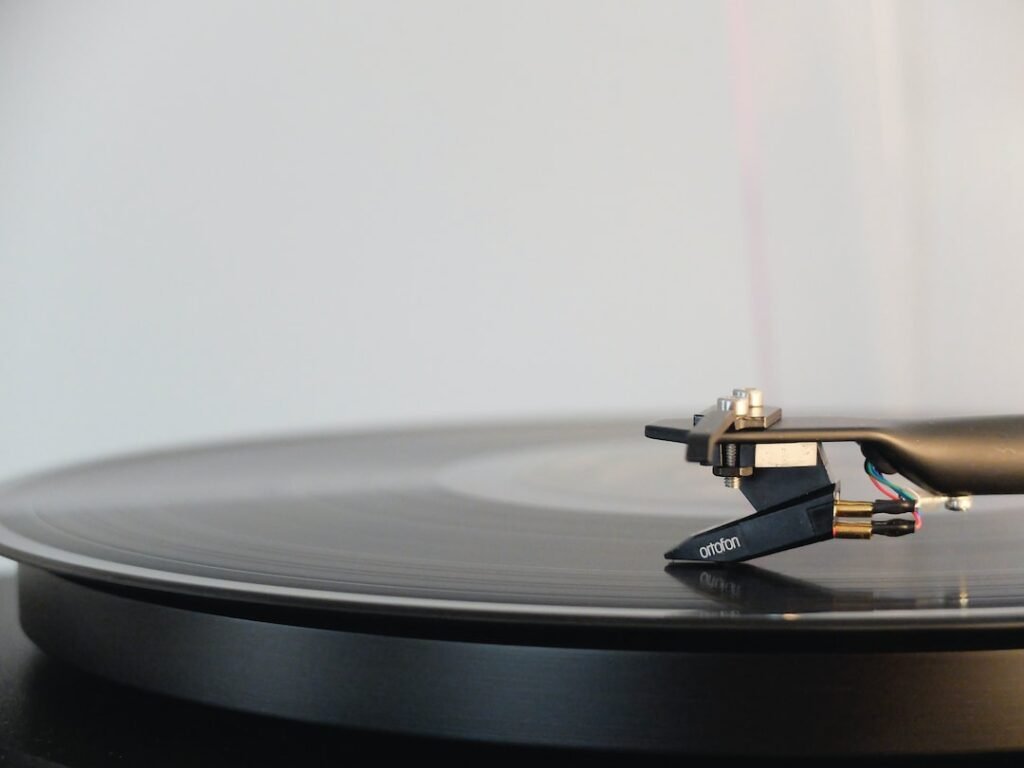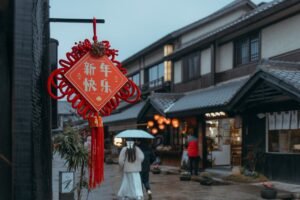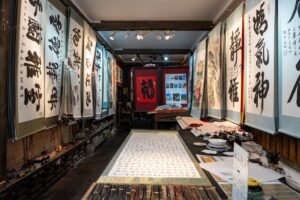Chinese music has a rich and diverse history that dates back thousands of years. It is one of the oldest and most influential musical traditions in the world. The origins of Chinese music can be traced back to ancient times, with evidence of musical instruments and notation systems dating back to the Shang Dynasty (1600-1046 BCE). Throughout its history, Chinese music has evolved and developed into various genres and styles, each with its own unique characteristics and cultural significance.
Traditional Chinese music can be broadly categorized into four main genres: court music, folk music, opera, and instrumental music. Court music, also known as “gong” music, was performed at royal courts and was associated with rituals and ceremonies. Folk music, on the other hand, was performed by ordinary people and reflected the daily lives and experiences of the common folk. Opera is a highly stylized form of musical theater that combines singing, acting, and acrobatics. Instrumental music, as the name suggests, is purely instrumental and often showcases the unique sounds and characteristics of traditional Chinese instruments.
Table of Contents
ToggleKey Takeaways
- Chinese music has a rich history dating back thousands of years.
- Understanding musical terminology is crucial for appreciating and analyzing Chinese music.
- Traditional Chinese instruments include the erhu, pipa, and guzheng.
- Basic musical notation in Chinese music uses a system of numbers and symbols.
- Melody and harmony are important elements in Chinese music, but rhythm and tempo also play a significant role.
The Importance of Musical Terminology
Understanding the terminology used in Chinese music is essential for appreciating and understanding its nuances. Chinese musical terms are often deeply rooted in the cultural and historical context of the music, and knowing their meanings can provide valuable insights into the music’s meaning and significance.
One example of a commonly used term in Chinese music is “yin” (音), which translates to “sound” or “tone.” In Chinese musical theory, yin refers to the pitch or frequency of a sound. Another important term is “liu” (流), which means “flow” or “melody.” Liu refers to the melodic line or sequence of notes in a piece of music.
Understanding these terms allows listeners to better appreciate the intricacies of Chinese music. It enables them to recognize different melodic patterns, understand the relationship between different musical elements, and gain a deeper understanding of the emotions and meanings conveyed through the music.
Understanding Traditional Chinese Instruments
Traditional Chinese music is known for its wide variety of unique and distinctive instruments. These instruments are often made from natural materials such as bamboo, wood, and silk, and each has its own unique sound and characteristics.
One of the most well-known Chinese instruments is the guzheng, a plucked string instrument with a history dating back over 2,500 years. The guzheng has a large resonant body and is played using a set of finger picks. It produces a rich and resonant sound that is often described as ethereal and haunting.
Another iconic Chinese instrument is the erhu, a two-stringed bowed instrument. The erhu has a small wooden body and is played by sliding a bow across the strings. It has a unique sound that is often compared to the human voice, and it is capable of expressing a wide range of emotions.
Other traditional Chinese instruments include the pipa (a plucked string instrument), the dizi (a bamboo flute), and the sheng (a mouth-blown free reed instrument). Each of these instruments has its own unique sound and playing techniques, and they are often used in combination to create rich and layered musical textures.
Basic Musical Notation
| Term | Definition |
|---|---|
| Staff | A set of five horizontal lines and four spaces that represent different pitches in music. |
| Clef | A symbol placed at the beginning of the staff that indicates the pitch of the notes on the staff. |
| Note | A symbol placed on the staff that represents a specific pitch and duration of sound. |
| Rest | A symbol placed on the staff that represents a period of silence in the music. |
| Time Signature | A symbol placed at the beginning of the staff that indicates the number of beats in each measure and the type of note that receives one beat. |
| Key Signature | A set of sharps or flats placed at the beginning of the staff that indicates the tonality of the music. |
Chinese musical notation is a system of symbols used to represent pitch, rhythm, and other musical elements. Unlike Western music notation, which uses staff lines and notes, Chinese musical notation uses a system of characters and symbols to convey musical information.
One of the most important symbols in Chinese musical notation is the “gongche” (工尺), which represents the pitch or tone of a note. The gongche system divides the octave into 12 equal parts, similar to the Western chromatic scale. Each pitch is represented by a specific character, and the position of the character on the page indicates the pitch of the note.
In addition to pitch, Chinese musical notation also includes symbols for rhythm and other musical elements. For example, a dot above a note indicates that it should be played staccato, while a curved line above a note indicates that it should be played legato.
Understanding Chinese musical notation allows musicians to accurately interpret and perform traditional Chinese music. It also provides valuable insights into the structure and composition of the music, allowing listeners to appreciate its complexity and beauty.
The Role of Melody and Harmony in Chinese Music
Melody and harmony are two fundamental elements of music, and they play a crucial role in traditional Chinese music. Melody refers to the sequence of pitches or notes in a piece of music, while harmony refers to the combination of different pitches or notes played simultaneously.
In Chinese music, melody is often characterized by its flowing and lyrical nature. Traditional Chinese melodies are often based on pentatonic scales, which consist of five notes per octave. These scales are believed to have originated from ancient Chinese philosophy and are associated with different emotions and moods.
Harmony, on the other hand, is less prominent in traditional Chinese music compared to Western music. Instead of focusing on complex harmonic progressions, Chinese music often emphasizes the relationship between melody and accompaniment. The accompaniment is usually played on instruments such as the guzheng or pipa, which provide a rich and textured background for the melody.
An example of a traditional Chinese song that showcases both melody and harmony is “Jasmine Flower” (茉莉花), a popular folk song. The melody is simple yet beautiful, with a flowing and lyrical quality. The accompaniment, played on instruments such as the guzheng and dizi, adds depth and texture to the song.
The Significance of Rhythm and Tempo

Rhythm and tempo are essential elements of music that provide structure and drive to a piece. In traditional Chinese music, rhythm and tempo play a crucial role in creating a sense of energy and momentum.
Rhythm in Chinese music is often characterized by its complex and intricate patterns. Traditional Chinese rhythms are based on a system of beats and subdivisions, with each beat divided into smaller units. This creates a sense of rhythmic complexity and adds a layer of interest to the music.
Tempo, on the other hand, refers to the speed at which a piece of music is played. In traditional Chinese music, tempo can vary widely depending on the style and genre of the music. For example, court music is often slow and stately, while folk music is often lively and energetic.
An example of a traditional Chinese song that showcases both rhythm and tempo is “Liu Yang River” (流水曲), a popular folk song. The song has a lively and energetic rhythm, with intricate patterns that create a sense of movement and momentum. The tempo is fast, adding to the sense of excitement and energy.
Traditional Chinese Music Forms
Traditional Chinese music encompasses a wide variety of forms and styles, each with its own unique characteristics and cultural significance. Some of the most well-known forms of traditional Chinese music include opera, folk music, and instrumental music.
Opera is one of the oldest forms of musical theater in China and combines singing, acting, and acrobatics. There are several different types of opera in China, each with its own distinct style and regional variations. Beijing opera is one of the most well-known forms of Chinese opera and is characterized by its elaborate costumes, stylized movements, and distinctive vocal techniques.
Folk music, on the other hand, reflects the daily lives and experiences of ordinary people. It is often performed at festivals, weddings, and other social gatherings. Folk songs are usually simple and melodic, with lyrics that tell stories or express emotions.
Instrumental music is purely instrumental and often showcases the unique sounds and characteristics of traditional Chinese instruments. It can be performed solo or in ensemble settings, and it often features virtuosic performances and improvisation.
Each of these forms of traditional Chinese music has its own unique characteristics and cultural significance. They provide valuable insights into the history, culture, and traditions of China, and they continue to be an important part of Chinese musical heritage.
Vocal Techniques in Chinese Music
Vocal techniques play a crucial role in traditional Chinese music, adding depth, emotion, and expressiveness to the music. Traditional Chinese vocal techniques are often characterized by their unique sounds and styles, which are different from those found in Western music.
One commonly used vocal technique in Chinese music is falsetto, which involves singing in a high-pitched voice. Falsetto is often used to convey emotions such as sadness or longing, and it adds a haunting and ethereal quality to the music.
Another important vocal technique in Chinese music is vibrato, which involves oscillating the pitch of a note. Vibrato is used to add warmth and richness to the voice, and it is often used in slow and lyrical passages.
Other vocal techniques used in Chinese music include glissando (sliding between notes), trills (rapid alternation between two adjacent notes), and ornamentation (decorative flourishes added to a melody).
An example of a traditional Chinese song that showcases these vocal techniques is “The Moon Represents My Heart” (月亮代表我的心), a popular Mandarin pop song. The song features a beautiful melody sung in a high-pitched falsetto voice, with subtle vibrato adding depth and expressiveness to the performance.
The Influence of Chinese Music on Western Music
Chinese music has had a significant influence on Western music, particularly in the 20th century. Western composers and musicians have been inspired by the unique sounds, scales, and techniques of Chinese music, and they have incorporated these elements into their own compositions.
One example of a Western composer who was influenced by Chinese music is Claude Debussy. Debussy was fascinated by the exotic sounds and harmonies of Chinese music, and he incorporated these elements into his compositions. His piano piece “Pagodes” from his suite “Estampes” is a prime example of his use of pentatonic scales and non-Western harmonies.
Another example is the American composer Lou Harrison, who was deeply influenced by Chinese music and culture. Harrison studied traditional Chinese music and incorporated its techniques and instruments into his compositions. His piece “Concerto for Pipa with String Orchestra” is a fusion of Western classical music and traditional Chinese music, featuring the pipa as a solo instrument.
In addition to classical music, Chinese music has also influenced popular music. The Beatles, for example, were inspired by the sounds and instruments of Indian and Chinese music, which they incorporated into their songs. The use of the sitar in songs such as “Norwegian Wood” and “Within You Without You” is a direct result of their interest in Eastern music.
Resources for Further Learning and Exploration
For those interested in learning more about Chinese music, there are a variety of resources available. Books such as “Chinese Music: An Introduction” by J. Lawrence Witzleben and “The Garland Encyclopedia of World Music: East Asia: China, Japan, and Korea” provide comprehensive overviews of Chinese music history, genres, and instruments.
Websites such as the China National Traditional Orchestra (cnto.org) and the Silkroad Project (silkroad.org) offer a wealth of information on traditional Chinese music, including articles, videos, and recordings.
Music streaming services such as Spotify and Apple Music also offer a wide selection of traditional Chinese music, allowing listeners to explore different genres and styles.
In conclusion, Chinese music is a rich and diverse musical tradition with a long and storied history. Understanding the terminology, instruments, notation, and forms of Chinese music is essential for appreciating its beauty and complexity. Whether it’s the flowing melodies, intricate rhythms, or unique vocal techniques, Chinese music offers a wealth of cultural and artistic treasures to explore and enjoy.








